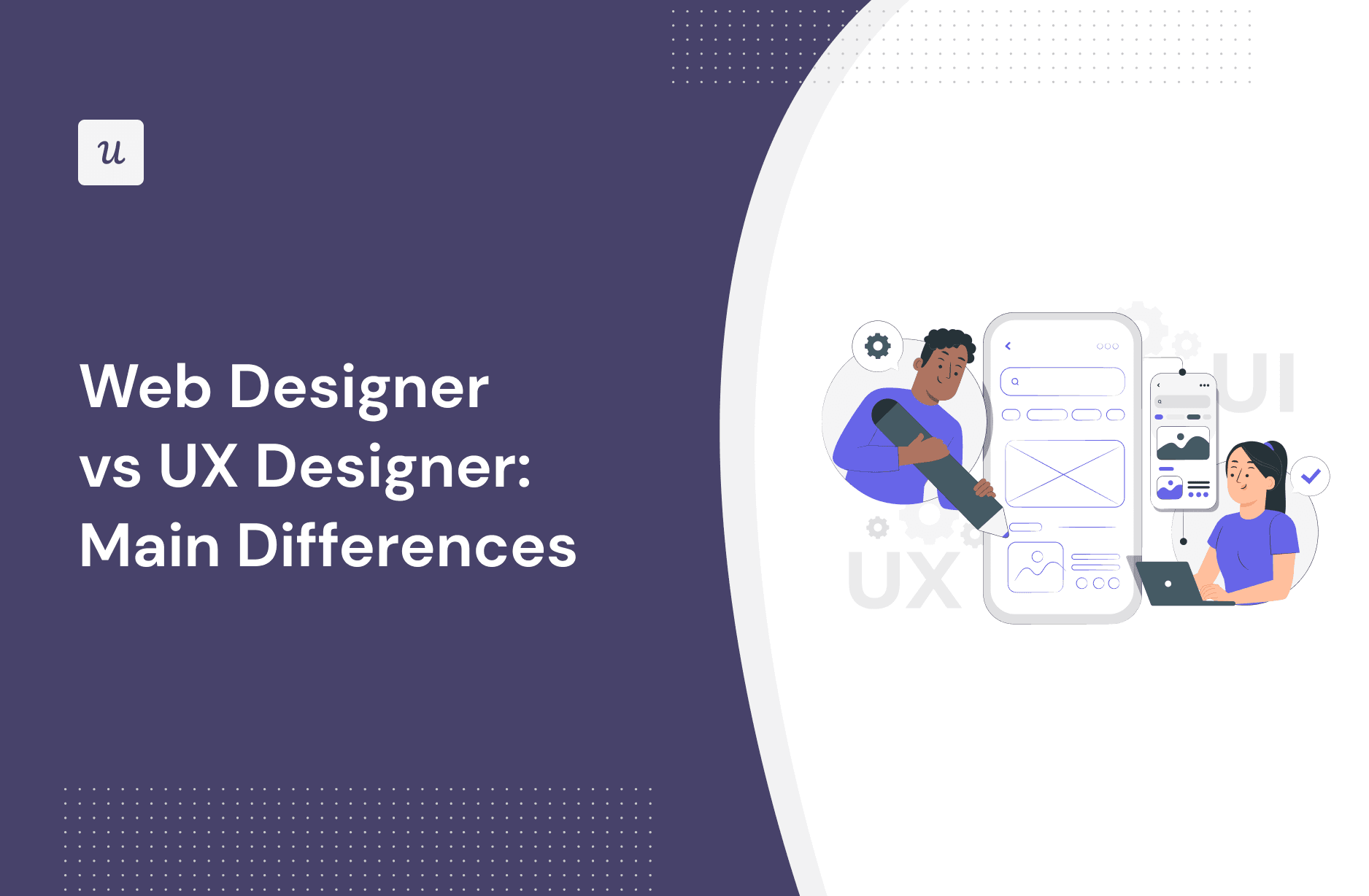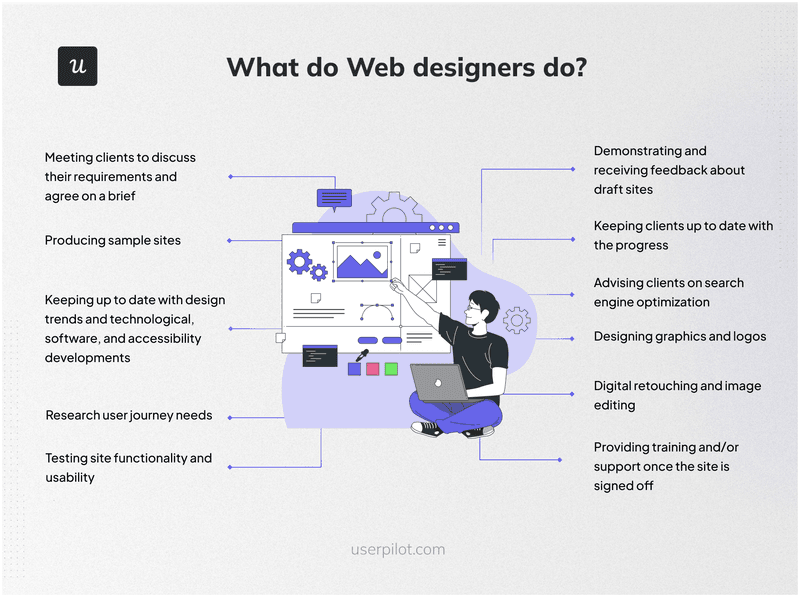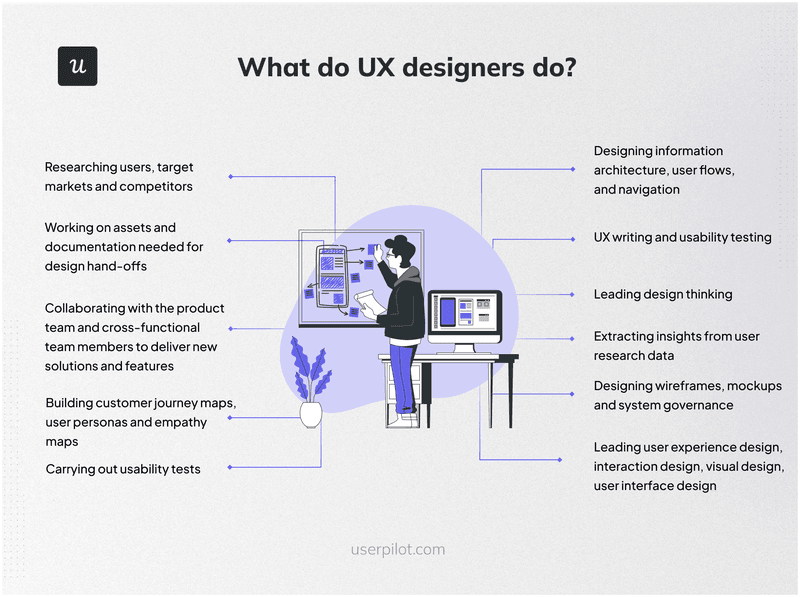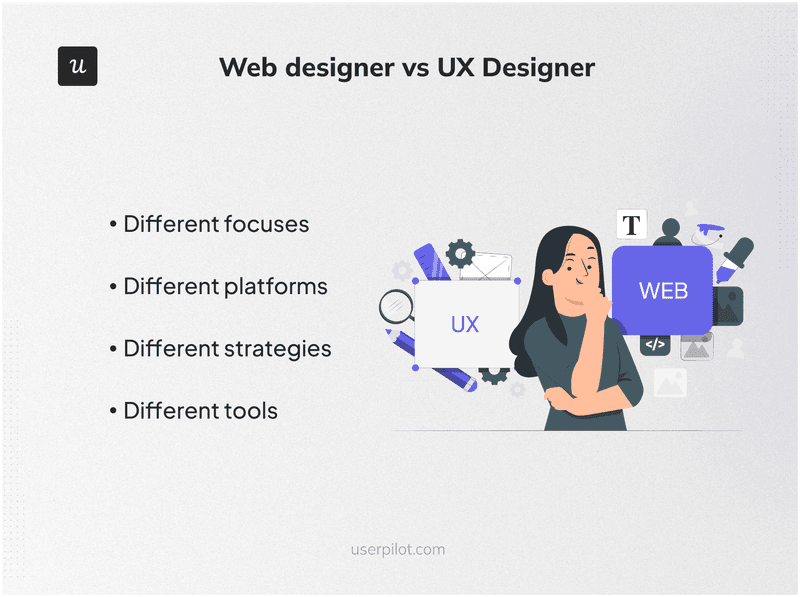
In the dynamic world of digital design, the roles of the web designer vs UX designer stand out as pivotal contributors to the online landscape. Despite the similarities in title, these are very different roles.
This article explores the roles and responsibilities of the web designer and the UX designer. It further explores their similarities and differences, helping you to decide which one you need for any given task.
What’s the main driver for your current project?
Thinking about a web designer vs UX designer starts with your primary goal.
A great look is key! But how do you ensure visitors don’t get stuck?
A web designer focuses on aesthetics, but usability keeps users engaged.
You’re focused on the user journey. How do you currently identify friction points?
A UX designer’s core task is to find and eliminate user friction.
Even with a great layout, how do you know for sure what’s working?
Web design creates the structure, but UX design validates it with real user data.
Gathering user insights is powerful. How do you scale that process?
Great UX design relies on continuous, contextual feedback, not just occasional surveys.
It’s clear you need more than a traditional web designer vs UX designer approach.
You’re ready to build experiences that not only look good but are proven to work for your users. True user-centric design requires continuous insight into the user journey, feature adoption, and friction points.
Userpilot empowers you to do just that—without writing any code. Guide users, gather feedback, and analyze behavior all in one place.
Try Userpilot Now
See Why 1,000+ Teams Choose Userpilot

What is web design?
Web design is the process of planning and creating a website’s layout, content, and graphics. Web designers are tasked with creating aesthetically appealing website structures based on the latest trends and technologies.
Core responsibilities of web designers
Also known as a front-end developer, a web designer is a professional tasked with designing a website’s layout and structure. This is different from the “web developer” whose primary task is to develop the backend of a website.
Web designers, thus, create the static designs that are rendered in a web browser. Their core responsibilities include:

- Collaboration: Web designers meet with clients to discuss their requirements and agree on a brief. They also keep them up to date with progress.
- Usability: They research user journey needs, test site functionality, and test for usability challenges.
- Graphic design: Web designers often double as the graphic designers of their websites. They design the graphics and visual brand elements used on a website and are responsible for retouching and editing images.
- Content writing: In addition to graphics, the web designer is often also responsible for creating written content for the website.
- Samples: As part of their collaboration with clients, web designers create sample/draft sites and receive their feedback.
- Technical know-how: They keep up to date with design trends and technological, software, and accessibility developments to help them stay ahead of the latest front-end programming practices.
- Support: They provide training and support to the end-user or client once the project is signed off.
What is UX design?
User experience (UX) design is the process of designing products that are useful and easy to use. UX design focuses on optimizing the interactions a user has with a product or service.
To achieve this goal, the UX designers conduct user research to understand how the product, app, or website experience makes the user feel, how the user interface looks, and how easy it is to navigate.
Core responsibilities of UX designers
The concept of UX design revolves around having a deep understanding of the end-user and their preferences, habits, and behaviors. They are tasked with designing the optimal solution that the project requires.
UX designers are complemented by user interface (UI) designers who work on the point of interaction between the user and the product. The UI designer focuses on the look, design, and feel of the product.
Although both roles are often combined into one, the core responsibilities of the typical UX designer include:

- User research: The UX designer researches users, target markets, and competitors and extracts insights from the research.
- Product flow: They design the information architecture, user flows, and navigation structure of the product.
- Product mapping: They create customer journey maps, user personas, and empathy maps to help them determine the ideal path each user must follow to achieve their goals.
- Documentation: They produce the written content on the user interface (known as UX writing) and create the documentation needed for design hand-offs.
- Collaboration: UX designers work with the product team and cross-functional team members to deliver new solutions and features.
- Usability testing: A UX designer conducts extensive usability tests to ensure the product works correctly.
- User Interface Design: They collaborate with UI designers to create product wireframes and mockups that satisfy both user needs and visual design standards.
- Design thinking: UX designers also lead overall design thinking efforts. They lead everything from system governance to interaction design, visual design, UI design, etc.
What do web design and UX design have in common?
Both web designers and UX designers are visual designers. They share a common goal of creating effective and user-friendly experiences. To achieve this goal, they both engage in:
- Problem-solving: To break down complex requirements into usable products, both the UX designer and the web designer must engage in some form of problem-solving for the client or the user.
- User journey mapping: Both web design and UX design require a deep understanding of user psychology and behavior to create easy-to-use products.
- Emotional design solutions: Both designers work to optimize both the look and the feel of the product (or website). They aim to create attractive products that users can connect with.
Main differences between web designers and UX designers
Despite the similarities above, web design and UX design are very different. We can summarize their differences under four key headings: focus, platform, strategy, and tools.

Different focuses
Web design focuses on creating websites for the internet. A web designer uses the latest programming languages and tools to create visually appealing websites with a responsive design.
UX design, however, focuses on the user. The UX designer considers the best way to optimize a product to cater to the user’s specific needs. Their goal is to create good user experiences using design tools.
Different platforms
Web design is strictly about creating websites that run on web browsers used on desktop or mobile devices.
UX design, on the other hand, is platform-independent, working on websites, mobile apps, desktop software, or even non-digital products.
Different strategies
A web designer emphasizes more of the aesthetics of the site, not how a user might deal with it.
Conversely, a UX designer coordinates continuous improvements by conducting extensive user research. They learn from user experiences and apply the insights gained to build better products.
Different tools
A web designer uses a variety of tools to achieve their goals. This includes interface design tools, programming languages (HTML/CSS/JavaScript), graphic design software like Adobe Creative Suite, and AI website generator platforms that simplify the website creation.
UX design, on the other hand, requires tools like Figma to develop wireframes and task flows for different user personas. They may also use analytics tools and feature tagging to collect data on different UX elements.
Interesting resources for web and UX designers
Whether you’re looking to advance your skills or just looking to stay up-to-date, there are a lot of interesting resources out there for UX and web designers. Here are two great resources:
How to use AI to improve your UX
In this exclusive session with Userpilot’s Head of AI, Jonathan Hodges, he explores the impact of AI in transforming user experiences today. He shares his insights on AI tools and techniques, and how to leverage them to understand user behaviors, create personalized experiences, and more.

Webflow University – Ultimate Web Design Course
Webflow’s free Ultimate Web Design Course is a 100-video course offered on Webflow’s online learning platform – Webflow University. It walks you through the basics of HTML and CSS, before focusing on the Webflow website builder.
It also delves into intermediate web design concepts like 3D styles, responsive design, and the Webflow CMS.

Conclusion
Although web designers and UX designers share a common goal of creating compelling online experiences, their approaches, focus, and skills differ significantly. While web design focuses on aesthetic beauty, UX design is more interested in creating user-centric product journeys.
If you’re a UX designer obsessed with creating the perfect user experience, be sure to book a Userpilot demo now.







